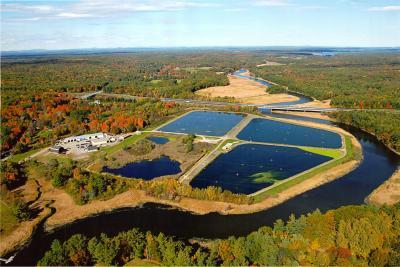Lagoon Odor
What is that foul smell?
The odor (hydrogen sulfide) is being caused by anaerobic sludge and the spring "turnover" of the wastewater treatment plant lagoon.
Why does is it seem stronger this year than in the past?
In order to construct the new Wastewater Treatment Plant, sludge (organic matter) from lagoon three needed to be removed. The majority of the sludge was transported out and disposed of, but the remainder was pumped to lagoon one to be processed as wastewater last fall. The weather has also played a role in the rise in odor. As warmer weather increases, the microbial activity increases as well resulting in the release of hydrogen sulfide.
Is anything being done to reduce the odor?
The addition of aeration and dissolved oxygen can help reduce the odor. Wastewater Operators have been deploying additional aeration units and modifying solar circulators to increase the oxygen levels in lagoon one to reduce the hydrogen sulfide. Also, high dissolved oxygen water from lagoon three is being recirculated to lagoon one to increase oxygen levels. Other improvements are also under consideration, including chemical addition for odor control and sludge removal.
Is hydrogen sulfide harmful?
Hydrogen sulfide is a colorless gas with the characteristic odor of rotten eggs. Hydrogen sulfide is often produced from the microbial breakdown of organic matter in the absence of oxygen gas, such as in swamps and sewers; this process is commonly known as anaerobic digestion which is done by sulfate-reducing microorganisms. Operators continue to monitor the levels of hydrogen sulfide in the air, which are safe and appear to be decreasing. Assistance has been provided by the New Hampshire Department of Environmental Services (NHDES), specialists in odor control from Bowker & Associates, and Wright-Pierce Engineers.

